Vijay Ravikumar
Vijay and Sushmita are mathematicians based in Chennai. They also work on documenting working class struggles in Tamilnadu and have been teaching an art class in Besant Nagar for the last year.

For over a year now, Sushmita and I have been running a weekly ‘visual art’ class for kids from working-class communities of Chennai, through the NGO Pudiyador. The kids are between 6 and 12 years old, and come from either the Urur Kupam fishing village next to Besant Nagar beach, or from a handful of cramped houses on Ramasamy Avenue near Vannanthurai bus stand. Many are from the fishing community, but their parents often also work in jobs like ragpicking, dismantling of metal trash, construction work, domestic work, and (among the better-off ones) driving a vehicle.






Most of what we do would not be called ‘teaching’ in a traditional sense. The kids have almost never seen us draw anything. We never discuss drawing techniques, or give drawing exercises. We’ve rarely even told them explicitly what they should draw. So what do we do? On a good day, we have a discussion, or maybe play a game, then give them materials, sit back, and watch them draw. Some of them produce images inspired by the discussion, and some of them just do their own thing.



Those are a few of the many drawings that have influenced me over this last year. Initially I discouraged kids from copying images from picture books, but soon I noticed that for many of them, the act of copying was itself an intimate act, in which they established an emotional connection with an image and made it their own.





I saw this for the first time when I brought in a book by Chris Hedges and Joe Sacco, “Days of Destruction, Days of Revolt“, and walked around the room showing his illustrations of the devastated towns of the Appalachian iron belt.
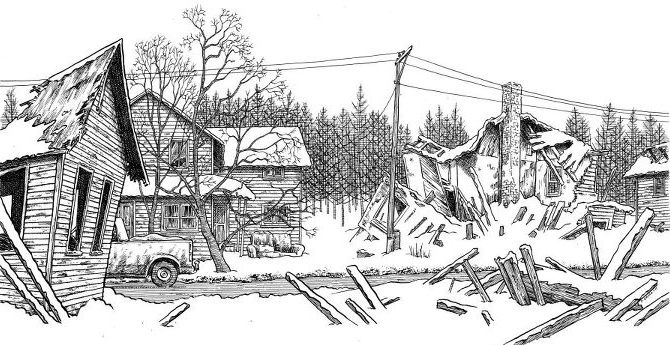
We asked the kids what they thought had happened to the town in the pictures. An earthquake! A tsunami! (Yes, it does look like that, doesn’t it.) People are not taking care of their houses! (Yes, and why are the houses being neglected?) People don’t have money! They’re drinking too much! (What’s happened to their jobs? Why do people drink?) and so on…
Kaushika, who is in 5th standard, came across a portrait of a Native American woman, near the beginning of the book:

She connected strongly with the image, and spent a long time taking it in. She then spent the class making her own version of the portrait. Unfortunately I do not have a copy of Kaushika’s version, but I hope she managed to hold on to it at her home.
If I do have an ulterior motive in these classes, it comes from the belief that art can help make unseen forces seen. And that there is something powerful in the connection that emerges during the act of drawing, a sort of confidence that can lead to insight and discovery. Sometimes I feel our class is an experiment in seeing how drawing can help kids relate their personal experience to larger forces operating in the various societies and cultures that intersect their lives.

I. SOCIAL JUSTICE (art can echo prevailing sentiments)
If you try to force it, by asking kids to address abstract social forces head-on, then you tend to get stereotypical answers. In one of the early classes we tried to discuss the concept of ‘social justice’. We discussed the recent ‘Road Safety Act’ and looked at a political cartoon I had made depicting some of the controversies around the act (it would have the effect of privatizing public transit in Chennai, for example). Amazingly, the kids quickly connected with the cartoon and even guessed that public transportation was being diverted for private profit–in their own words of course. We then tried to discuss moments in their lives when they felt something unfair or ‘unjust’ had happened to them. We suggested they depict that event in a drawing, as well as an alternate scenario that would have been more fair. However, the moment they started drawing, most of them reverted to a theme they were more comfortable with: what you should and should not do!


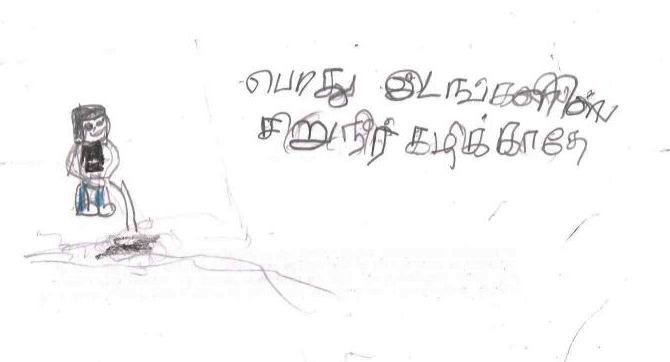

The answers to these questions are predictable, and nicely echo the prevailing voices in the media, in the school system, and in culture as they experience it.
Draw somebody you admire:

Draw your house during the floods:


How can you encourage kids to break away from what they think they’re supposed to say? One way out is to ask questions they have not anticipated.
II. SKIN COLOR (art can challenge assumptions)
In a later class we decided to address the depiction of skin color in media. We began by distributing local newspapers and magazines, then had each kid count how many ‘white’ people (meaning extremely light-skinned, but not necessarily European) they could find and how many people ‘with color’ they could find. Of course, most kids couldn’t find a single person ‘with color’ in their newspaper. ‘Why is everybody ‘white’?’ we asked. Overwhelmingly, the kids responded that advertisers wanted to sell as much as possible, and people wanted to buy what ‘white’ people are using. But why do people want to be like ‘white’ people? The response to that question was much more confused.

We gave them an activity. They were now the advertisers, and they could choose any product they wanted to sell. But they had to advertise it in a world where everybody wanted to be dark-skinned; where dark-skinned people are considered more attractive, more honest, more hard-working, and more intelligent.

It was clear that many of the kids were deeply conflicted here. Despite being dark-skinned themselves, they visibly struggled to bring themselves to draw dark-skinned people! Moreover, they could not fall back on answers or images that would be safely ‘socially acceptable’ because this particular assignment, at this point in time, still goes against the middle-class, upper-caste narrative of what we should aspire to in life.
III. MAPS (art can document)
Another activity that struck a chord with the kids began as a simple map-making exercise. We talked about the routes they take to get to and from school, as well as other places near their homes. We asked them to describe places they are allowed to go and places they are not, and also asked why they are not supposed to go to some of these places. Then we asked them to draw maps, to the best of their ability.
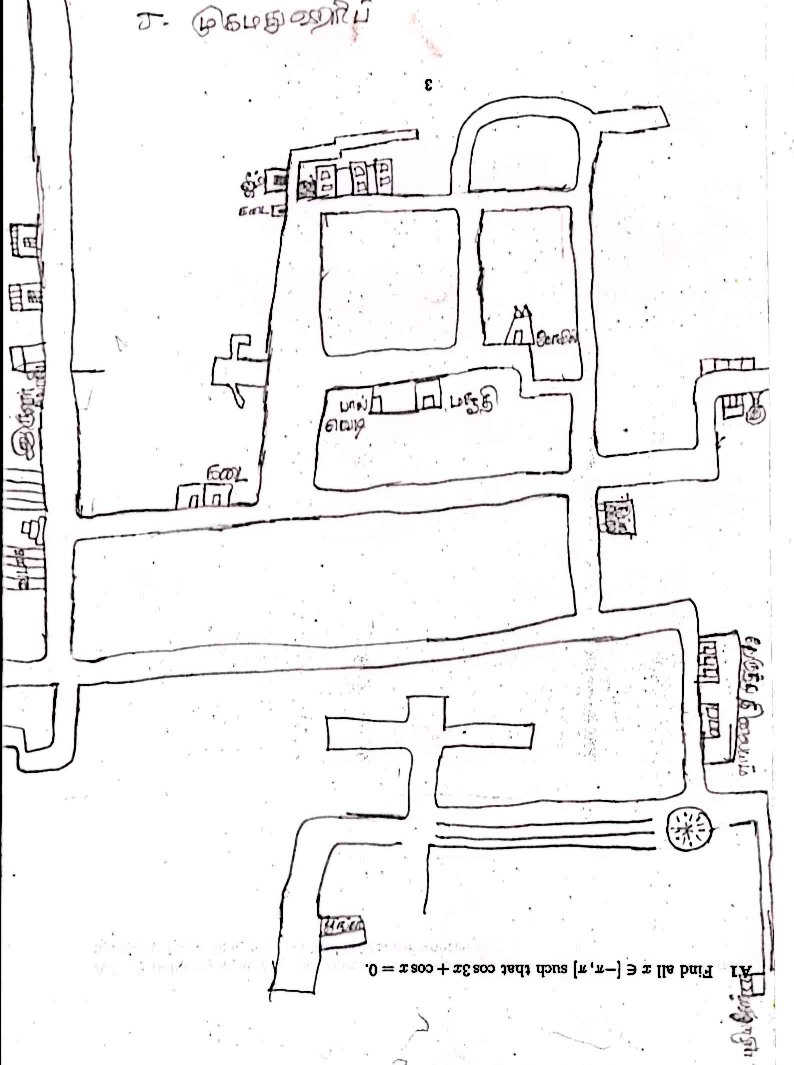

It was striking how naturally and confidently kids were able to map their routes through drawing. Most of the kids became totally absorbed in making maps, and one student, Pradeep, decided to use his map document the impact of the Chennai flood on his neighborhood.
The kids understood that art can be used to document. It is my hope that they also gained new perspective on some of their personal experiences through the process.
CONCLUSION:
My primary motivation for running the class has not been to push a particular agenda, but rather stems from a curiosity about the inner lives of the kids. One of the most interesting aspects of the class has been watching them develop and change over time.
Sathish, who turned six last week, has one of the most flamboyant and distinct styles of anyone in his age group. Yet it developed quite suddenly about 8 months back–before that he was obsessed with drawing policeman brandishing lathis, and nothing else!
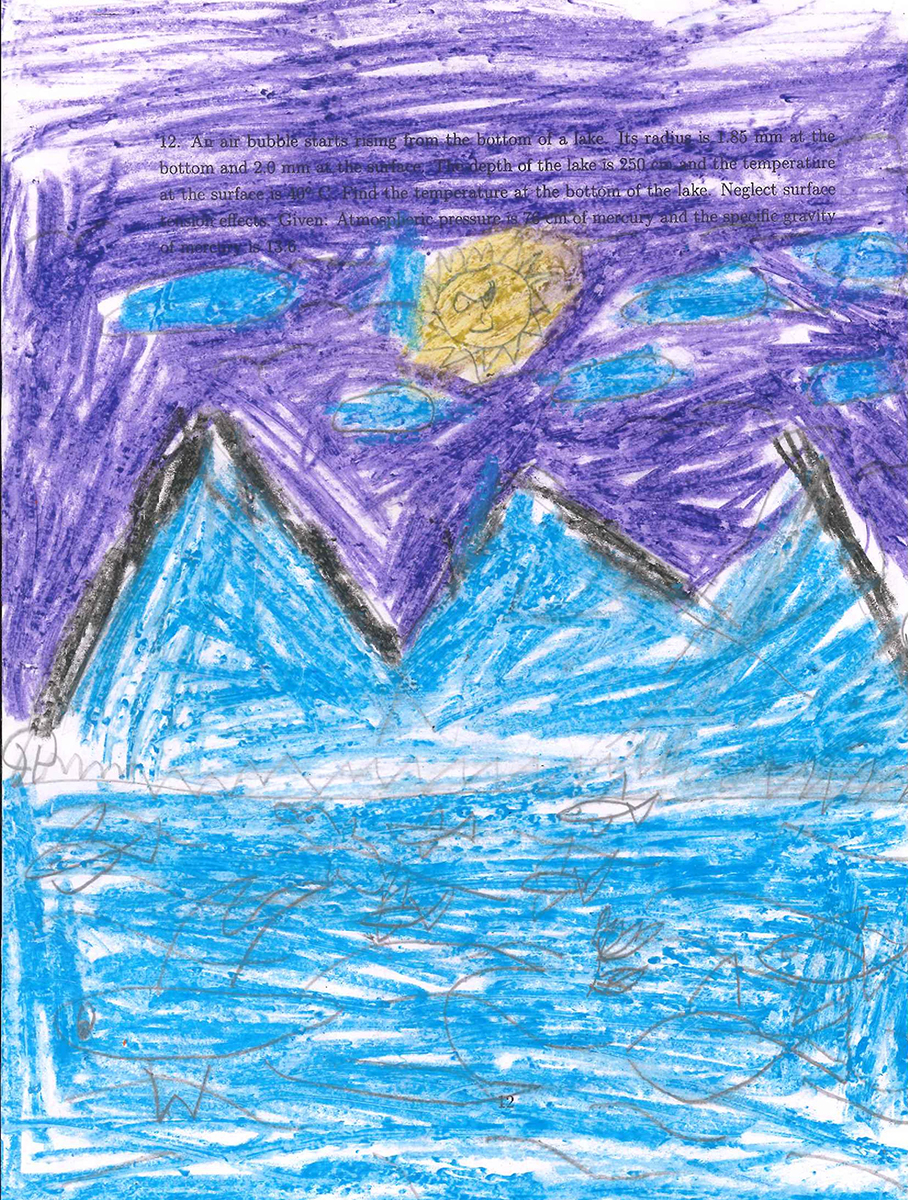

In contrast his brother Vetrivel, who is one year elder, has become much more reserved. At one point he destroyed most of his earlier drawings, and since then he has mostly copied from picture books. There is one drawing in particular that he has copied persistently for the past three months, showing Gulliver tied down to the ground by the Lilliputians. In the few original drawings he has produced of late, the figures of himself and his family have gotten smaller and smaller.

A third student who has developed considerably is Dinesh, who is eleven. During the course of the year he was forced to leave one school due to ‘behavioral problems’ and has since joined another. He gets angry quickly and does not socialize with other kids of his age. His drawings show a high level of maturity though, and a very unique sense of spatial organization.

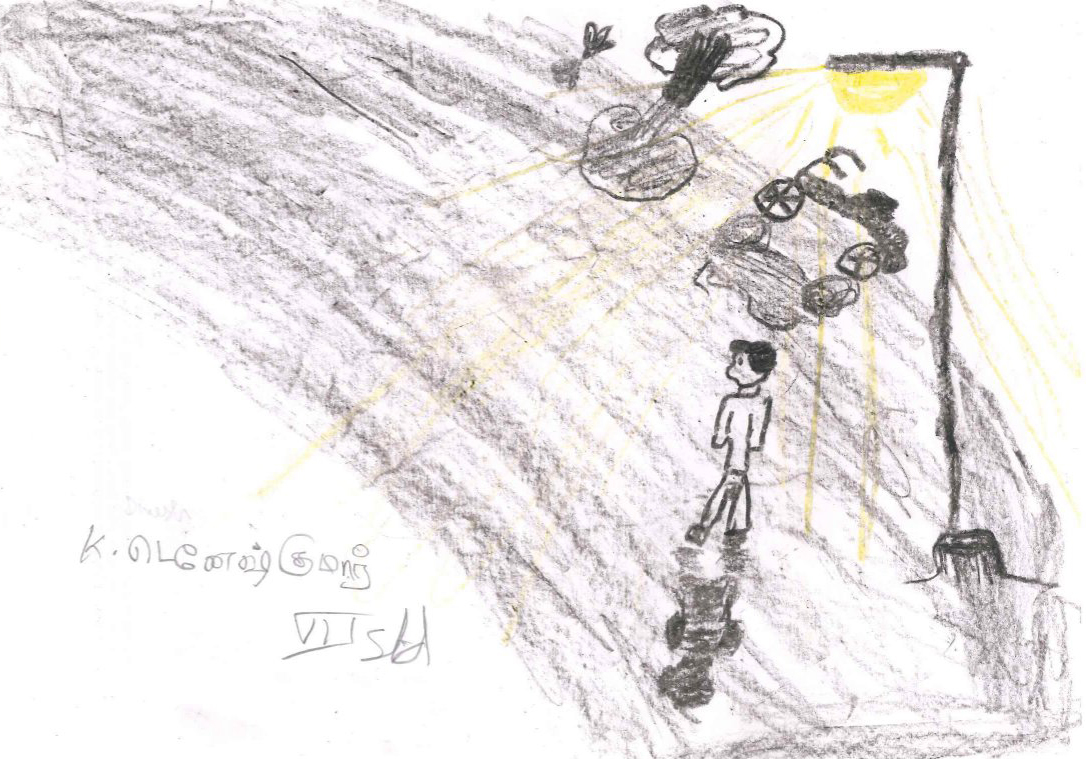
In the end, I want to keep encouraging these three, and all the others as well, to keep telling their stories, to keep exploring their visual spheres. I would like to keep hearing their stories and to see more of how they see the world. I hope in the process I am giving them confidence that what they produce is noteworthy and interesting, and that this confidence can have a small effect in their lives.

Images: Children from Pudiyador, Joe Sacco

2 thoughts on “Working On Art With Working-class Children”